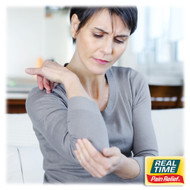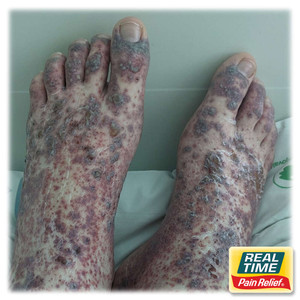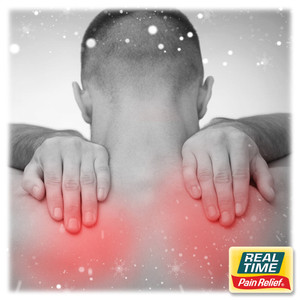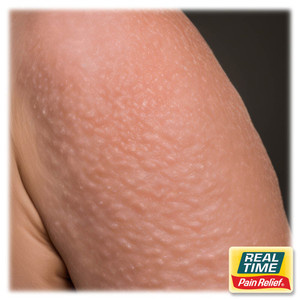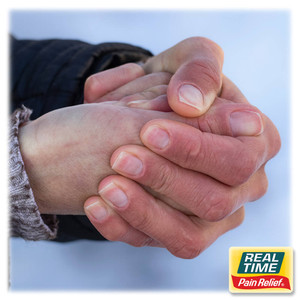7 Tips to Get Relief for Tennis Elbow
24th Aug 2022
Dealing with tennis elbow? Here are 7 tips to help you get relief!
Tennis elbow is a common condition and according to the Mayo Clinic, is most common in adults between the ages of 30 and 50. But, people of all ages can develop the condition. The technical or medical name for tennis elbow is lateral epicondylitis. It involves the tendons that attach to the outside of the elbow; the muscles that are attached to this tendon are used to straighten the forearm and wrist.
Causes of Tennis Elbow
Tennis elbow can occur due to trauma to the elbow. A direct blow to the elbow joint may lead to inflammation and damage to the tendon, but it is much more common for tennis elbow to develop due to overuse. When repetitive stress is placed on the tendon, over time, it can lead to irritation and inflammation. Repeating the same motions over and over are often the culprit.
Although the nickname implies that the condition is due to playing tennis, many other activities can lead to the injury. For instance, throwing motions or gripping objects repeatedly can lead to tennis elbow. Activities that cause repeated contraction of the muscles of the forearm, which are used to raise and straighten the wrist and hand, may also stress the tendon.
Symptoms of Tennis Elbow
The primary symptom of tennis elbow is pain at the elbow. The pain may be worse when lifting or gripping an object. Usually, the pain starts at the outside of the elbow and may radiate to the forearm and even the wrist. In some cases, the elbow is tender to the touch.
Depending on the severity of symptoms, tennis elbow can interfere with everyday work and recreational activities. Symptoms can last anywhere from six months to a year. The good news is most people fully recover within a year without the need for invasive treatment, such as surgery.
7 Relief Tips for Tennis Elbow
While physical therapy, steroid injections, and surgery are sometimes used to treat tennis elbow, most people find relief from self-care tips. According to the American Academy of Orthopedic Surgeons, about 85 to 95 percent of people with tennis elbow are able to treat the condition without surgery.
Consider the following at home tips to relieve tennis elbow:
#1) Modify Activities
Although you don’t want to completely immobilize your arm, limiting activities that aggravate the pain is often needed when treating tennis elbow.
#2) Take a Joint Supplement
Taking a joint supplement can be helpful when treating tennis elbow. Although it is the tendon that is affected, a supplement can keep the elbow joint healthy and may improve flexibility and decrease swelling and pain in the tendon. Look for a joint supplement that contains ingredients, such as Boswellia Serrata and ginger root.
#3) Use a Compression Wrap
If the swelling is significant, using a compression wrap can help. When placing the wrap around the elbow, be sure to avoid putting it on too tight.
#4) Do an Ice Massage
An ice massage is often a useful way to treat tennis elbow, especially when the pain is first felt. Ice can decrease swelling, pain, and inflammation. Apply ice in a circular motion directly to the painful area for about five minutes. Use ice massage several times a day.
#5) Wear a Brace
Wearing an elbow brace may provide extra support to the area and allow it to heal quicker. There are different types of elbow braces for tennis elbow including bands that are worn over the forearm muscle. If you are unsure about which type of brace to wear, ask your doctor for recommendations.
#6) Try a Pain Relief Lotion
Applying a pain relief lotion a few times a day may decrease pain from tennis elbow. Topical pain relief lotions do not lead to the side effects that oral pain medication can and are often effective in reducing discomfort.
Opt for a topical pain relief lotion that is made from ingredients such as menthol, arnica, glucosamine, and capsicum. To use the lotion, apply a coat over the elbow and forearm and wait a few minutes for it to dry. After it dries, you can apply a second coat.
#7) Perform Strengthening Exercises
Doing strengthening exercises can improve tennis elbow and may prevent it from coming back. It’s best to wait until inflammation and pain are mild before performing strengthening exercises. One easy exercise to do is the towel twist. Just take a towel in both hands and twist it in opposite directions as if you were wringing out the water. Perform the motion about five times a few days a week.
Prevention Tips for Tennis Elbow
Once you develop tennis elbow, you may be more susceptible to future flare-ups. There are a few things you can do to try to prevent future bouts of tennis elbow. Consider the following prevention tips:
- If you play a racket sport, always warm-up beforehand by doing gentle arm stretches.
- Use lightweight tools when possible to decrease pressure on your tendon.
- If you perform repetitive movements that involve your forearm, give yourself frequent breaks to rest the area.
Pain Relief You Can Trust® Since 1998
For over 20 years, families across the U.S. have turned to Real Time’s lotions and creams for PAIN RELIEF YOU CAN TRUST®. From Lifestyle Essentials, through our Nujuvena line, to Pain Relief Formulas, Real Time has you covered. LEARN MORE
Sources

